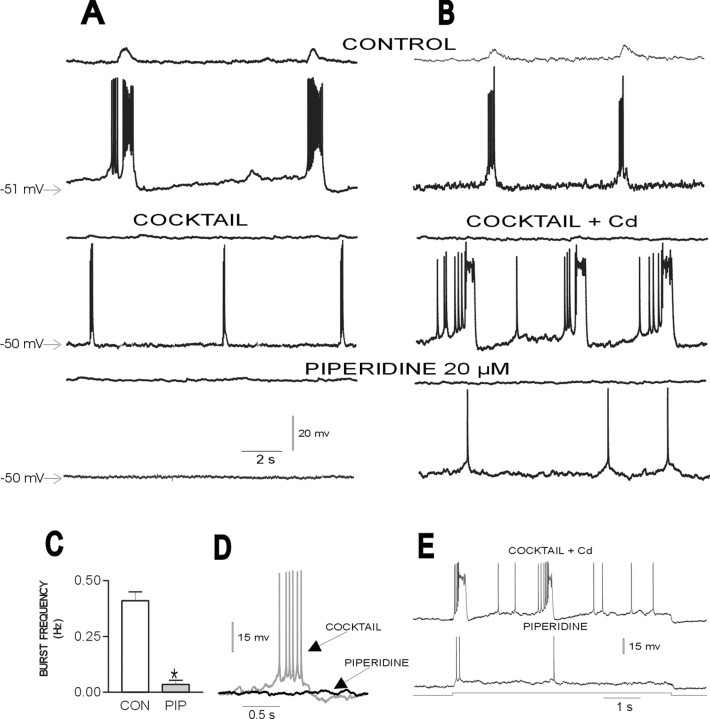Fig. 6.
Blockade of endogenously activated 5-HT2A receptors abolishes pacemaker properties in cadmium-insensitive pacemaker neurons. A, B, Top panel, Two inspiratory neurons recorded in different slices (bottom traces) discharging in phase with integrated population activity (top panel) under control conditions.Middle panel, After the blockade of respiratory population activity with the mixture (COCKTAIL) inA or mixture plus 200 μm cadmium inB (top trace), the pacemaker neurons continue to generate intrinsically rhythmic activity (middle trace), which is abolished after the application of piperidine (bottom panel). C, Histogram plotting the average spontaneous burst frequency of 18 cadmium-insensitive pacemaker neurons before (CON) and after (PIP) the application of piperidine. D, Expanded trace of a single burst recorded in a cadmium-insensitive pacemaker neuron under control conditions and in the presence of piperidine. E, Burst activity evoked in a cadmium-insensitive pacemaker neuron (top trace) by the application of a square pulse of depolarizing DC (bottom trace). The same pulse evokes only isolated action potentials after the application of piperidine (middle trace). Note also a reduction in action potential amplitude and frequency in the presence of piperidine. *p < 0.05 (Student's paired t test) compared with control.

